Ever found yourself in the dugout, scratching your head, thinking the youth baseball gear game’s just a slick slider, with vendors tossing the same seasoned baseballs our way, all while slapping a major league price tag on it? Yeah, they’re all supposed to echo the majors—9 inches in circumference, hitting the scale at a hearty 5 oz. But is every piece of cowhide really playing in the same ballpark?
Now, don’t take it as gospel that I’ve unraveled the mystery behind every double stitch curving across those spheres—we’re in a league with a bench deeper than a postseason roster when it comes to brands and models. However, I’m about to drop a bit of dugout dirt on those Rawlings gems for you.
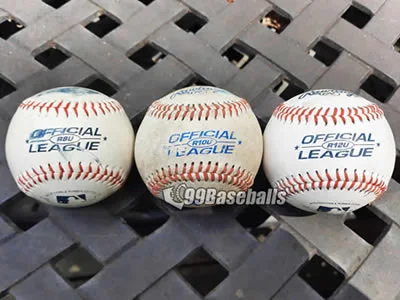
Scouting for the right pill for your young gun isn’t as simple as snagging any old ball from the bucket so in this post, we will be eyeballing the Rawlings R8U, R10U, and R12U balls.
Quick Table
Rawlings 8u baseballs
Stepping into the batter’s box for the junior league heroes, Rawlings swings big with a duo aimed square at the tykes aged 8 and under.
Enter stage left, the Rawlings R8U, alongside its squadmate, the Rawlings OLB3. These two rookies sport a synthetic hide that, between you and me, might give off a slick sheen or echo that fresh-out-the-box action figure feel.
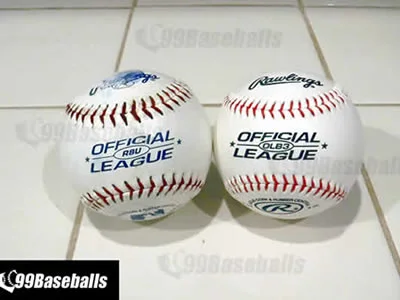
Rawlings R8U and OLB3 baseballs look and feel identical so what is the deal with different names?
It has to do with marketing hype and tolerance specs. Both are intended for youth recreational baseball but OLB3 supposedly has tighter specifications so the weight and size variance is smaller when compared to R8U baseballs. However, I was not able to detect any perceptible differences between these rec baseballs.
One thing to note is that given our little leaguers are working with mitts that haven’t quite hit their growth spurt, Rawlings played smart by trimming just a touch off the standard circumference for both baseballs. Clocking in around 8.75 inches all around, the R8U and OLB3 make it a whole lot simpler for those rising stars to get a good grip and swing for the fences.
In my experience as a coach, R8U and OLB3 baseballs are mostly used in batting cage BP and light fielding drills. And here’s the scoop straight from the horse’s mouth: Rawlings pitches these balls for the practice mound and the casual throw-around. They’re not the ones you’d want to bring to the showdown.
Curious about the official game balls that take the field for the 8U, 10U, and 12U squads? Swing by our guide on Different Types of Baseballs for Different Ages post for the full scouting report.
| Peculiarity of Age Brackets |
|---|
| In the world of rec ball, you’ll often see teams that are a mix-and-match of players spanning a couple of grades. Take, for example, the Cal Ripken Minors under the Babe Ruth League—it’s not unusual for third and fourth graders to share the dugout as teammates. On the flip side, when we venture into the competitive realm—think travel and tournament baseball—teams are built around a precise age bracket, like 8U, 9U, 10U, and so on. But, here’s the curveball: there’s a bit of wiggle room for kiddos born in a certain month. Let’s play out a scenario: Today’s March 1, 2024. Your travel squad has set the cutoff for age groups in May. If your youngster’s birthday falls between May 1 and May 31 of 2013, and you’re butting heads with that May cutoff, you’ve got a choice. Your player can either swing in the 11U division or step back to the 10U league. Want the nitty-gritty on how age eligibility plays out? Dive into the “Age Calculator for Travel and Rec Teams” post for the full playbook. |
Rawlings R8U baseballs
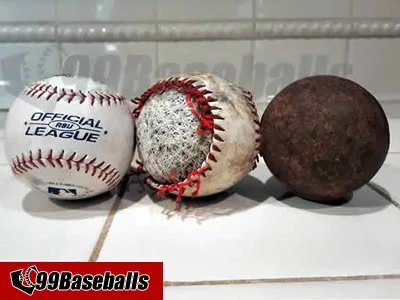
The Rawlings R8U baseball is crafted from a trio of components. The outer cover is synthetic – a heads-up, if you’re scouring for details and can’t find whether it’s leather or synthetic, you’re pretty safe to bet on synthetic. Stitching comes into play as the middleman, binding the shell to the heart of the baseball. At its core, you’ll find a blend of crushed cork and rubber, bonded together to form a solid base, wrapped around with a thin-layer of poly finishing winding.
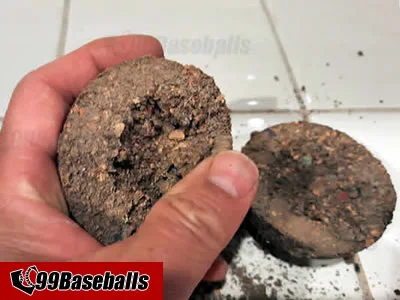
Tipping the scales, a Rawlings R8U averages out at a solid 4.9 ounces, with the core alone accounting for 4.4 ounces of that weight. This means the heart of the R8U isn’t your standard fare; it skips the usual rubber center for a heftier, cork-dominated nucleus.
Rawlings OLB3 baseballs
The OLB3’s in the ballpark, edging up to that golden 9-inch standard and tipping the scales just a hair over, clocking in at around 5 oz. Eyeing the OLB3, it’s sporting a synthetic cover too. But here’s where it veers off from the R8U:
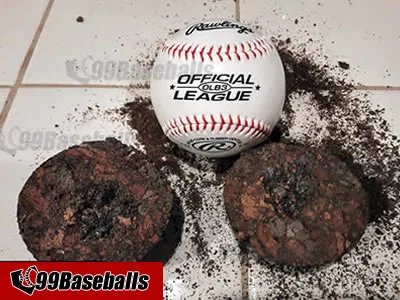
Its synthetic shell’s built a bit tougher, pushing up those seams a notch higher. Peek into its guts, and it’s a rubber-heavy scene. The core’s loaded with bigger rubber chunks, making for a heftier, possibly stickier interior (could be a beefier adhesive at play?).
Now, for the twist—despite its rugged getup, the OLB3’s exterior doesn’t quite hold up as stoutly as the R8U’s in the durability department.
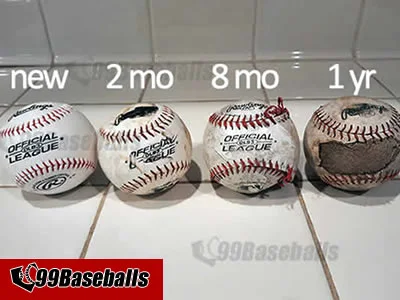
The Rawlings R8U and OLB3 make a decent starting point for players still getting a feel for the game, especially those with smaller hands. That said, I’ve got my reservations about synthetic covers. If you’re looking in another direction, you might want to give the Diamond D-OB baseballs a shot. They match the Rawlings models in terms of performance and safety but stand out with a genuine leather cover, offering a different touch for those who prefer the classic feel.
Rawlings 10U Baseballs
In my years coaching and scrutinizing equipment for the young sluggers, Rawlings has pitched two models aimed at the 10-and-under league: the Rawlings R10U and the Rawlings CROLB. Let’s cut straight to the chase—there’s no real difference between these two.
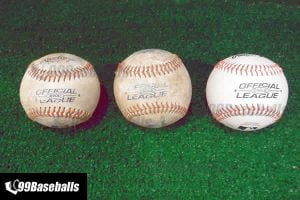
Each is sheathed in what appears to be split leather, a lesser grade of leather that’s been treated and embossed to mimic the higher-quality stuff. They’re both stitched together with a thin poly thread over a core that’s a mix of rubber and cork, strikingly similar to what you’d find in the R8U balls.

From my standpoint, both the R10U and CROLB are adequate for the majority of players aged 10 and under. However, be warned: these balls might not hold their shape if they’re sent flying by a heavy bat, something that’s not uncommon when coaches are lobbing long balls in practice.

So here’s the lowdown:
Neither the Rawlings R10U nor the CROLB makes the cut as official game balls in my book. Sure, they’re cloaked in leather, but there’s a glossy finish that, frankly, feels a bit too akin to the synthetic vibe of the R8U or OLB3 balls.
For the 9-year-olds stepping up to the plate, both balls will do the trick for practice sessions. But for the 10-year-olds, especially those playing at a sharper competitive edge, I’d advise passing on these and opting for the Diamond DOL-1s. These balls have a construction and durability more suited to the demands of players gearing up for the next level.
Rawlings 12U baseballs
Stepping up to the plate for the 12U squads, there’s a noticeable shift in the makeup of their baseballs compared to what the younger groups use. For starters, most brands, including Rawlings, opt for a wound yarn construction for this age bracket. This is a game changer—the core is notably smaller than what you find in 10U baseballs, packed with a denser assembly of rubber to add some extra hop to the ball’s bounce.
Breaking it down, we’re talking about a four-part assembly line:
- A leather exterior
- A snug layer of fine thread
- The wound yarn
- A core of cork and rubber

Rawlings throws a couple of options into the ring for the 12-and-under crowd with the Rawlings R12U and the Rawlings ROLB2. Now, if you’re getting a sense of déjà vu comparing these to the R10U and CROLB, you’re not off base. The R12U and ROLB2 are practically twins in both look and guts:
- Each boasts a core that’s 6.25 inches in circumference, tipping the scales at 2.2 oz.
- The heart of the ball is a 50/50 split between rubber and cork, tightly packed for maximum performance.

Yet, it’s a consensus in the coaching circles that these balls are more suited for practice drills.
But let’s drill down on how these stack up against bona fide game balls. Drawing a bead on the 12U tournament scene, teams often swing for either the Rawlings RCAL1 or the MacGregor 74CAL. Here’s the scouting report: the MacGregor comes with a thicker yarn wrap around a smaller “pill”, resulting in a ball that’s quick off the bat, leaving the Rawlings R12U/ROLB2 trailing in the dust.
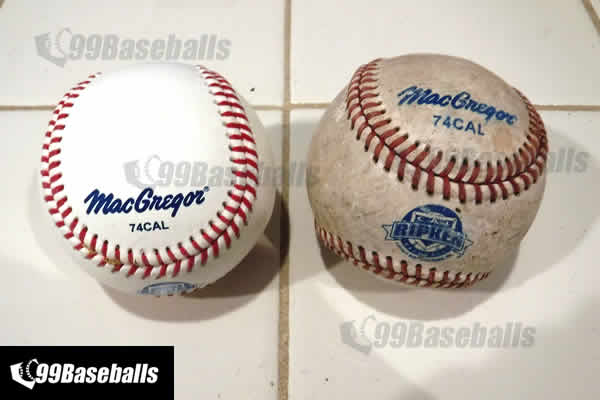

Takeaways
Next time you’re sizing up those youth baseballs, don’t just chalk it up to the same old ball game. Remember, this isn’t solely about the specs. It’s about tailoring the game to the young sluggers stepping up to the plate, giving them a genuine shot at knocking it out of the park. That’s the kind of insight that really hits home.
Keep in mind, most leagues won’t hand over a bucket of practice balls to managers and coaches. I get it—the struggle to weigh your needs against your budget when stocking up on baseballs is real.
If you’ve found this rundown useful, how about showing some love? Sign up for my newsletter and keep the line drives coming.
| Please don’t forget to visit Buying Baseballs – Reference Articles page to read other fascinating information about baseballs! |

Staci Flis
Sunday 4th of February 2024
I am trying to figure out what the best baseball to buy my 11 year old is. He picked a bucket out online but I noticed it said 8u he us trying to practice hard so he can become even better and I want him to have the proper equipment! Should we be buying 12u!
Chad
Sunday 4th of February 2024
Hi Staci-
8U baseballs have the same dimensions and weight as 12U baseballs.
However, the wool windings in 8U baseballs are much thicker than those in 12U baseballs, designed to absorb the energy from the bat. When hit, 8U baseballs produce a "thud" sound, providing slightly more reaction time for younger players. Additionally, in the unfortunate event of a player being hit by a ball, 8U baseballs will most likely reduce the injury severity.
If Nathan is brand new to baseball, it's perfectly fine to practice with 8u baseballs. Otherwise, I would recommend getting some 12U baseballs. Just ensure his bat grip is in good condition, as these harder baseballs will sting more (if he hits the ball off the sweet spot on his bat).
Hope this helps!
Chad
Charley McDaniel
Thursday 22nd of June 2023
Nice article about baseballs learnt a lot.
Baseball Dad
Friday 23rd of June 2023
Hi Charley,
Thank you for your kind words!
Kevin
Kathy Cameron
Tuesday 14th of March 2023
We have vintage baseballs that were damaged. Can they be restored? Do you. Offer such a service? They were damaged by humidity.
Baseball Dad
Wednesday 15th of March 2023
Hi Kathy,
Sorry to hear about your vintage baseballs... Unfortunately I do not offer a restoration service :(